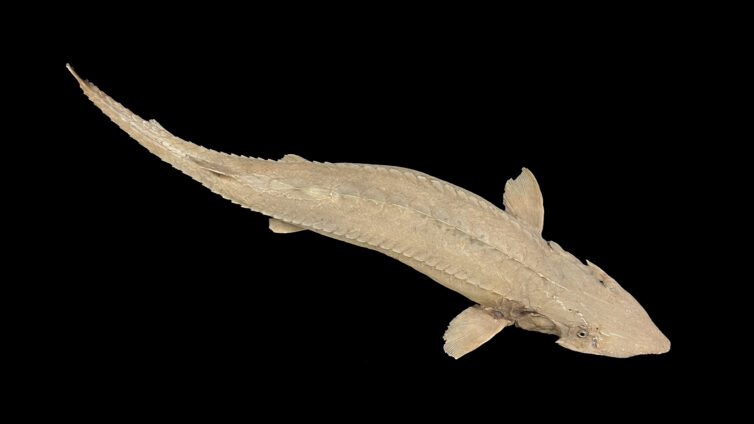
There are twenty-nine species of fish in the sturgeon family. Fossils of sturgeons first appear in rocks dating to the Middle Jurassic (about 174 million to 163.5 million years ago), meaning that these fish were contemporaries of dinosaurs! They live in the ocean of the Northern Hemisphere and use rivers for spawning in the spring.
Their bodies are covered in bony plates called scutes, and they have “four sensitive tactile barbels” on the underside of their snout (Britannica, n.d.). The fish drag these barbels over the sea or river floor bed, looking for small fish or other food. They have no teeth.
Sturgeons can grow up to seven to ten feet long, with some species reaching up to twenty-six feet long. Their weight can be up to five hundred pounds!
They are very well-known for their eggs, which are sold as caviar. Due to this demand, sturgeons are critically endangered.
Reflection Question:
Try to measure seven to ten feet on the floor here (each floor tile is 12 inches). Would a full-grown sturgeon take up most of this room?
Reference:
The Editors of Encyclopaedia Britannica. (2023, February 24). Sturgeon | Characteristics & Facts. Encyclopedia Britannica. https://www.britannica.com/animal/sturgeon-fish
